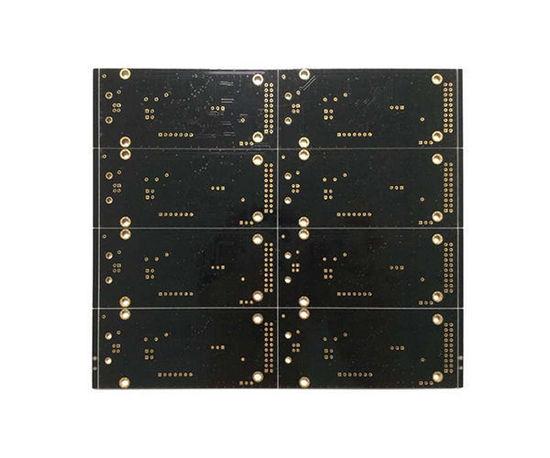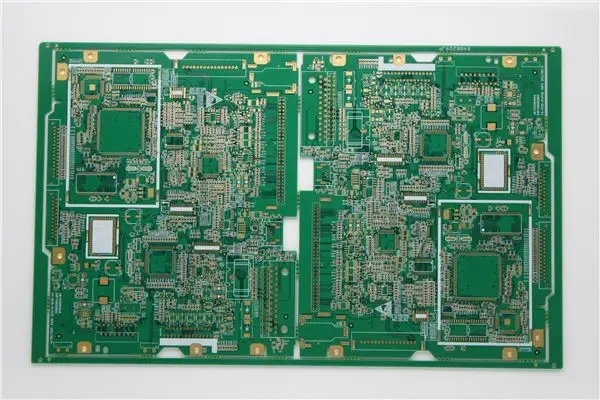
Circuit board manufacturer explains the application of anti-interference circuit
Circuit board manufacturers, circuit board designers and PCBA manufacturers will explain the application of anti-interference circuits
1. Introduction
As we all know, the position of the receiver in the radio measurement and control equipment is between the antenna and the signal processing system. Its function is to select useful target echoes from many electromagnetic signals received by the antenna, and send them to signal processing or terminal display equipment after amplification and conversion. Since we only need useful signals, other unwanted electromagnetic signals are called interference.
Therefore, one of the functions of the receiver is to select the desired target signal from the signals including interference and suppress the interference signal. In the radio TT&C equipment, the IF receiver can adopt various anti-interference measures to improve the performance of the receiver and ensure the signal processing and measurement accuracy of the TT&C equipment.
2. Classification and transmission mode of interference
Generally speaking, the vulnerable part of the radio measurement and control equipment is the IF receiver, in addition to the simulator, temperature control, servo control, video processing, central machine and control machine, display and control console and other electronic equipment. Therefore, the electromagnetic environment of IF receiver is very complex. These devices will produce different forms of noise interference when working, which will affect the working performance of the receiver.
2.1 Classification of interference
According to the working environment of the intermediate frequency receiver of the radio measurement and control equipment, interference can be generally divided into the following categories according to the different generation and transmission routes:
(1) Power interference: This kind of interference is very common. When different electronic systems (or different circuits in the same system) share the same power supply, the coupling of the common impedance (i.e. the internal resistance of the power supply) will form the output of its own noise or the reception of external interference, thus causing the interference of IF received signals;

(2) Induced noise interference: this interference exists in the design of each circuit board. It is caused by mutual electric field induction, magnetic field induction and electromagnetic induction due to unreasonable circuit wiring or component installation position;
(3) Reflected noise interference: In long line transmission, reflection noise will be generated due to mismatched transmission impedance, and this reflection noise will cause noise interference to other circuits. There are many transmission lines in the measurement and control equipment room, which are very easy to interfere with the receiver;
(4) Interference caused by self-excited oscillation: This kind of interference is very common in receivers. It is the noise interference generated by the self-excited oscillation caused by improper positive feedback coupling in the circuit with amplification function.
(5) Distortion noise interference: During signal transmission, signal waveform will be distorted due to abnormal circuit operation. When the harmonic component of the distorted waveform is large, especially when the frequency is the same as that of the receiver's 60MHZ IF signal, it will produce great interference and affect the normal operation of the receiver.
2.2 Transmission mode of interference
The reason why the noise generated by the noise source can interfere with the normal working electronic system is that there is a certain propagation path, namely coupling channel.
From a broad perspective, there are two ways to transmit interference: through space radiation and through wire conduction.
2.2.1 Conducted interference through conductors
The interference is transmitted through the conductor mainly through the common impedance coupling and grounding loop coupling. When the equipment or components share the power line and ground wire (the power line and ground line on the printed board), mutual interference will be generated between the equipment or components through the common impedance. The resistance of power line and ground wire is very low, but it contains distributed inductance, so its impedance cannot be ignored at high frequency. High frequency interference current will produce considerable interference voltage on the common impedance. When two equipment are signal connected to each other and grounded at different points, if there is potential difference between the two grounding points, ground ring interference will occur.
2.2.2 Interference transmitted through space
When the interference propagates through space, the forms of interference are divided into near field coupling and far field radiation. If the distance between the sensitive circuit and the interference source r《 λ/ 2π( λ Is the highest frequency wavelength of the interference source) is near-field coupling, and the interference source interferes with the sensitive circuit through electric and magnetic fields.
The interference between circuits of various parts inside the equipment is often in the form of near-field coupling. If r λ/ 2 π is far field radiation interference. The interference between general equipment or systems belongs to far field radiation interference.
PCB manufacturers, PCB designers and PCBA manufacturers will explain the application of anti-interference circuits.







